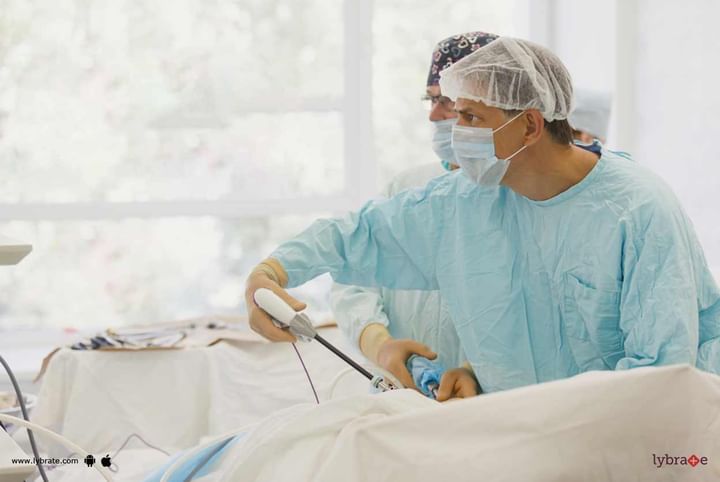Laparoscopic Inguinal Hernia Repair !
Hernia occurs when a weakened area of muscle in the abdominal wall gives way and the internal organ/tissue bulges out through this weakened are or ‘defect'.This can happen in many different areas of the abdomen. A hernia that develops in the groin region is called "inguinal hernia".It may be very painful especially if a part of the intestine gets trapped in the bulge.
The only treatment option is surgical repair as the weakened area "defect" needs to be repaired and will likely need reinforcement by a prosthetic material called a "mesh".Doctors may resort to Open Surgery or Laparoscopic Inguinal Hernia Repair depending on his/her evaluation of the patient.
Who is a candidate for Laparoscopic surgery?
Laparoscopic surgery is the preferred treatment option for most people with inguinal hernia. Special situations in which laparoscopic surgery is much superior to open are
Failure of a previous open surgical repair. Laparoscopic surgery is performed from "behind" the hernia and abdominal wall in comparison to open surgery which is performed from "the front".So, in case of failure of the open surgery, laparoscopic surgery is done through a fresh, non-scarred area and is technically safer and easier than doing an open surgery once again.
If there are hernias on both sides and both need to be repaired at the same time, laparoscopy has a great advantage as both the hernias can be tackled and repaired through the same three tiny cuts, and two separate large incisions need not be made.
Who is Not a Candidate for Laparoscopic Surgery?
The person is not a candidate for Laparoscopic Surgery if he has:
- Some patients who have undergone previous Abdominal Surgery or prostate surgery may not be suitable candidates for laparoscopic inguinal hernia surgery.
- Some underlying medical conditions, that make him unfit for general anaesthesia, as usually laparoscopic surgery can only be done under general anaesthesia.
How Laparoscopic Inguinal Hernia Is Carried Out?
In a Laparoscopic Intervention, two to three small incisions are made in the lower abdominal area. The laparoscope is passed through one of these incisions and the surgical instruments are inserted through the other incisions. The abdominal cavity is inflated using Carbon Dioxide to help the surgeon visualize the lower abdominal area clearly. Using the laparoscope, the surgeon visualizes the Hernia and uses long instruments to operate on it. She covers the hernia with a mesh and may fix the mesh to abdominal muscles using either stitches or stapler-like instruments.
Benefits of Laparoscopic Surgery
- Two or three tiny cuts (5-10 mm in size), hence there is less pain after laparoscopic surgery
- Better cosmetic results
- Quicker recovery
- Early return to daily activities like walking, working, etc
- Shorter hospital stay
Role of Laparoscopic Surgeon In comparison to many other minimally invasive surgeries:
Laparoscopic Inguinal Hernia Repair is more demanding in terms of the technical capability of the surgeon. In general, Laparoscopic Inguinal Hernia Repair is more difficult to carry out in obese people than others. However, if the doctor is well trained and technically advanced with long experience, he can carry out such minimally invasive surgeries smoothly irrespective of the BMI of the patient. Everybody is not a candidate for Laparoscopic Inguinal Hernia Repair.
It is the doctor who decides if a particular patient is suitable for such surgery or not. However, the conclusive factor in any such repair is the experience and expertise of the doctor. This is why there are not many Laparoscopic Surgeons who carry out Laparoscopic Inguinal Hernia Repairs. Owing to the complexity of this procedure, it is important to get it done from an expert surgeon only.



+1.svg)
